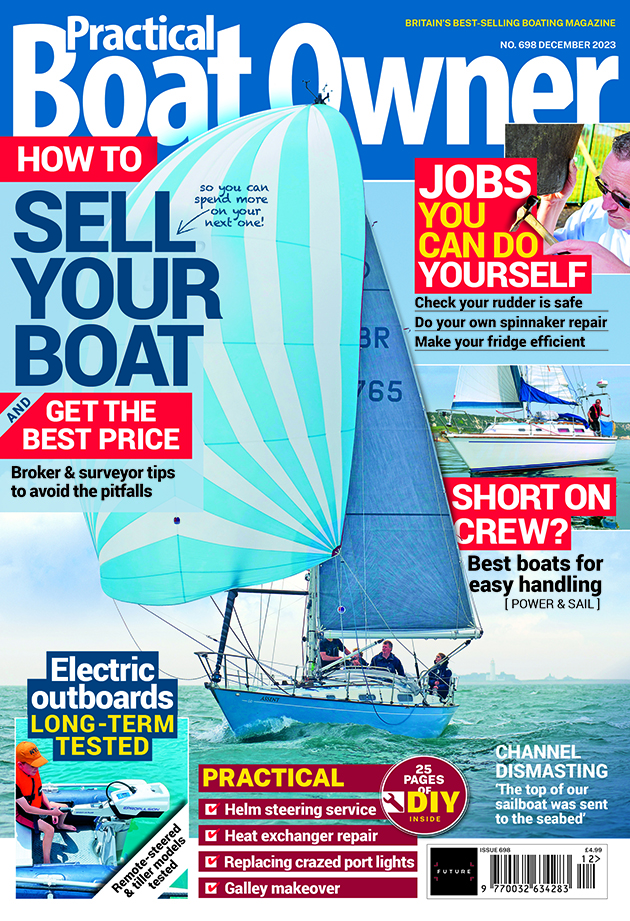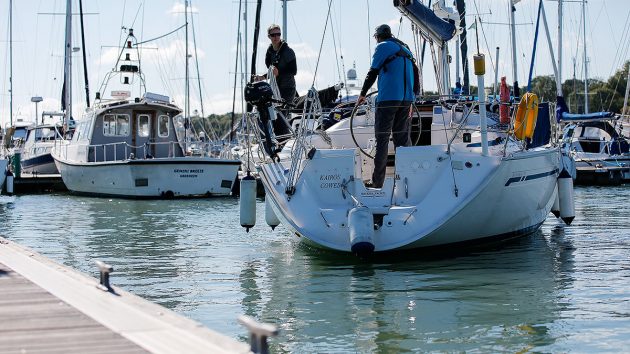Coming alongside can be tricky for singlehanded and short-handed sailors. Øyvind Bordal has some sailing skills that will come in handy in harbours
How many people are on board when you go sailing? A good guess is that you’re only two, and often the extra crew is your spouse. As people have less time on their hands, and schedules are tight, the average crew size has decreased over the years. But with furling sails, electric winches, bow thrusters and navigation software, boat handling has become much easier.
That said, harbour manoeuvres can still be tricky. Success in short-handed sailing is a lot about preparation and planning – thinking scenarios through beforehand, over and over – and practice.
Failures are inevitable, but any manoeuvre can be practised with crew on board. Let your crew gradually step back and allow you to take over more and more tasks – ideally one task at a time.
Techniques for coming alongside will vary from port to port, and in different conditions, but planning and practice will always pay off.
6 top tips for coming alongside
1. Know where the wind comes from, and use it actively. Wind will affect the way your boat moves, and increasingly so as your speed decreases. Usually it will be an advantage to moor into the wind, and depart with the wind behind you. The same goes for the current. Look for buoys, pilings, moored yachts or other things in the water that indicate the direction of the current. You can use wind or current to stop the boat on your way in, or to help you out when leaving.

Coming alongside: Should you box-berth, go alongside or raft to another boat? If you’re not sure, take a swing around the harbour and consider your options. Credit: Graham Snook/YM
2. Monitor your speed. This means being slow enough to stop and change your plan – but fast enough to steer the boat properly at all times. Remember your rudder only works when water is flowing over it. A boat with no speed is a sitting duck for wind and current. If you lose all speed, you’ll need room to build it up again before you’re able to manoeuvre. Don’t hold back on the throttle. If the boat needs to be swung around, change direction from forward to aft, or if you need to turn the bow into the wind at low speed, a lot of power may be necessary – but only in short bursts. Pull back on the throttle as soon as the boat starts to do what you want.
Continues below…
Berthing a vessel: 2 clever ways with warps
In these days of fin keels, bow-thrusters and powerful engines, using warps for marina manoeuvres might seem an old-fashioned irrelevance…
How to pick up a pile mooring
Picking up a pile mooring can be a challenge – especially in a tidal harbour. David Harding explains how it’s…
Best boat rope – the right rope for mooring lines, halyards and sheets
At this time of year we often start to put into place plans for upgrading our boats for the new…
14 tips for single handed anchoring
Ben Meakins tries out some methods for dropping and recovering the anchor for singlehanded sailors in crowded anchorages
3. Think ahead. This may be the number one rule of seamanship in general, but it certainly applies here. Unfortunately, it’s possible to find yourself trapped in a corner with no way out. An example could be losing all speed (and thereby steering) and not having enough space to build back up the speed to steer. Before entering an unfamiliar or busy harbour, be sure to prepare the boat with mooring lines and fenders on both sides. Spring lines ready to set from the middle of the boat are very useful. Now you’re ready to change your mind at short notice, as you move towards the dock. Before you approach, make sure you have communicated clearly what the plan is.
4. Know your boat. Boats will behave very differently in harbour manoeuvres. Boats with a long keel will have a bigger swing radius than fin-keeled boats. Boats with high topsides and deckhouses are more exposed to wind, and will drift more than lower, flush decked boats. Heavy boats take longer to stop than lighter boats. In particular, the transition between back and forth, and steering characteristics when reversing will differ greatly.

Coming alongside: Nice angles for mooring lines, and a little slack to allow the boat to move slightly. Credit: Graham Snook
5. When coming alongside a pontoon, try to start with as short a line as possible from the midships. This will stop the boat from moving backwards or forwards. If the line has to be run diagonally a few extra metres, leave the engine idle but in gear. Now you have time to quietly take care of your fore and aft mooring lines.
An alternative is to get the first line ashore from the back of the boat. Move slowly forward by engine until the line is tight. Keep the engine engaged and adjust rudder until the boat is positioned where you want it. When in balance, this arrangement will take care of itself while you walk around to arrange the other mooring lines.
The same technique can be used when leaving the pontoon. Start by removing all passive mooring lines. Keep only the ones that are actually doing a job at the moment. Run all lines back to the boat, so they can be cast off from the deck.

Box berthing is common in Northern Europe
6. In many marinas in northern Europe, boats are secured by their bow to the pontoon and their stern to two posts. This is known as box berthing. In this instance, when entering between piles, you may allow the boat to squeeze diagonally between them (if piles are wood or covered by plastic tubes). If not, try to stop with the piles midship and find the balance point. Take your time with this.
Sometimes there are separation lines running between the pile and the dock. If so, wrap a line from the bow around the line to windward and move forward a bit. Now you have secured the bow, and have all the time you need to sort out the aft mooring lines. Then continue forward, until you can get a line ashore from the bow. Tighten the windward aft mooring line sufficiently, jump on to the dock with the front mooring lines. Start with the one to windward, and make sure to bring it back to the boat.
Extra fenders on the front part of the boat can be a big help – they allow you to rest your bow in a controlled way on a neighbouring boat, if side wind takes control as you slow the boat down. When you leave the dock, the same technique can be used, only reversed.
Enjoyed reading this article? 
A subscription to Practical Boat Owner magazine costs around 40% less than the cover price.
Print and digital editions are available through Magazines Direct – where you can also find the latest deals.
PBO is packed with information to help you get the most from boat ownership – whether sail or power.
-
-
-
- Take your DIY skills to the next level with trusted advice on boat maintenance and repairs
- Impartial in-depth gear reviews
- Practical cruising tips for making the most of your time afloat
-
-








